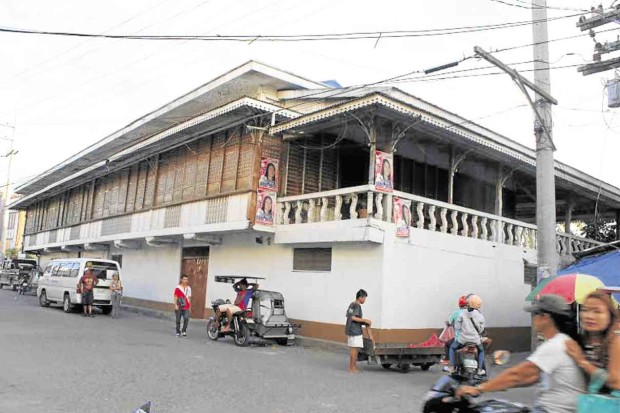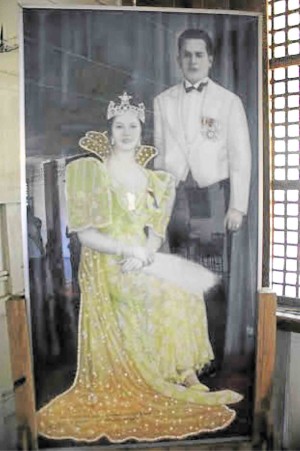In Masbate, old house draws pilgrims

THE SPANISH-ERA Balay ni Bayot has survived fires and calamities, and has become a pilgrimage site in the heart of Masbate City. PHOTOS BY JUAN ESCANDOR JR.
Deemed blessed for housing a statue of the Dead Christ, a Spanish-era house featuring the architecture and design of the classic bahay na bato (stone house) has survived for more than a century in Masbate City, despite major fires at different times in recent history.
Still upright on its original foundations, Balay ni Bayot (House of Bayot) near the port showcases native hardwood floors, walls and doors with latticework and intricate carving, as well as catipay-shell sliding windows with ventanilla, and statues of St. Anthony of Padua, the Virgin Mary and Jesus Christ.
Angelita Villarente Bantayan, 79, who was born and had lived in Balay ni Bayot, said the revered Dead Christ statue had been in the city even before the house was built. The image was brought by brothers Francisco and Joaquin Bayot, Spanish military men sent to the Philippines by the Spanish Crown.
Bantayan, whose parents had worked in the Bayot household, said the place had become a museum of sorts, with old portraits of the Bayot family and several antique furniture in it, and a pilgrimage destination for devotees of the Dead Christ and other saints.
Pilgrims visit the house, also called “Palacio del Señor Santo Entierro” (Palace of the Dead Christ), every Friday, the only day it is opened to the public.
Article continues after this advertisementBantayan believed that during World War II, the statue of the Dead Christ kept them out of harm’s way because the Japanese solders who were about to attack the house were driven away by American soldiers just in the nick of time.
Article continues after this advertisementCarmen Perfecto, 88, great granddaughter of Francisco and Joaquin Bayot, said the house was built in the 1800s. She said her ancestor brothers arrived in the Philippines by ship, landing somewhere in northern Luzon and somehow found their way to Masbate province.
She remembered little about her ancestors’ activities in Masbate. All she knew was that Francisco, the older brother, married a member of the Zurbito family and Joaquin married a member of the Danao family. The Zurbitos and Danaos are landed clans of Masbate, she said.
“My grandmother and grandfather were first cousins. There was no prohibition against the marriage of close relatives in their time,” Perfecto said.
She lives in another bahay na bato, several blocks away, which was built by Joaquin. Francisco’s house could be older than Joaquin’s, she said.
Interesting memories filled Balay ni Bayot. One story said then President Manuel L. Quezon once stayed and dined there, attending parties and dances hosted by Francisco. The gatherings were held in the living room, which had floors made of slabs of naga, with alternating colors of brown and yellow.
A portrait of the granddaughter of Francisco, Carmencita Zaldariaga, who was crowned Miss Philippines in 1937, is displayed prominently. Zaldariaga is escorted by Col. Antonio Arnaiz, her husband.
Records from the Filipinas Heritage Library said Arnaiz and another pilot, Juan Galvo, were the Filipino pilots who flew from Manila to Madrid aboard a plane named Commonwealth on May 29, 1936.
The dining room had a 14-seat table and anteroom where meals were arranged before serving.
Bantayan said the members of the Bayot family were also married to wealthy families, like the Madrigals, Ortigases and Tambuntings.
A clan member, Patrocinio Bayot, took care of her education and sent her to Philippine Women’s University in Manila to study commerce, she said.
The woman praised the Bayots for their generosity to their tenants and workers, giving them parcels of land.
